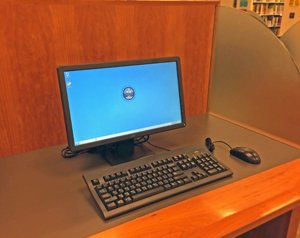Congratulations! Spring semester is over and you can (maybe? hopefully?) relax a bit and enjoy the beautiful weather Boston has to offer this time of year.
Whether you’re on campus, off campus, or halfway around the world this summer, you can access many technology services from wherever you are.
Phone, Online, and In-Person Support
Service Desk: open for phone support Monday-Friday from 7:30am – 5:30pm.
Technology Support Center: located in LEF-331 and open for walk-ins Monday-Friday from 8:00am – 6:00pm.
Technology Desk: located on the first floor of Lefavour Hall in Beatley Library and open Monday-Thursday from 8:00am – 6:00pm, and on Fridays from 8:00am – 5:30pm.
If you need help during the evening or on the weekend, or if you’d rather not pick up the phone, then take a look at the revamped Service Desk websitewhere you can find answers to many common questions, access technology services, and submit a support request online.
Web-based Technology Services
Remember, you can access your email, calendar, Google docs, Moodle, AARC, and more from anywhere you have an Internet connection.
VPN
If you need to access technology services that are only available from the on-campus network, you can tap into them remotely by using VPN. To access VPN, go to vpn.simmons.edu. For more information on how to use VPN,click here.
 In an effort to improve the overall performance of computers in Beatley Library, Technology will be replacing 20 Windows computers on the first floor of the library with virtualized computers this summer.
In an effort to improve the overall performance of computers in Beatley Library, Technology will be replacing 20 Windows computers on the first floor of the library with virtualized computers this summer.